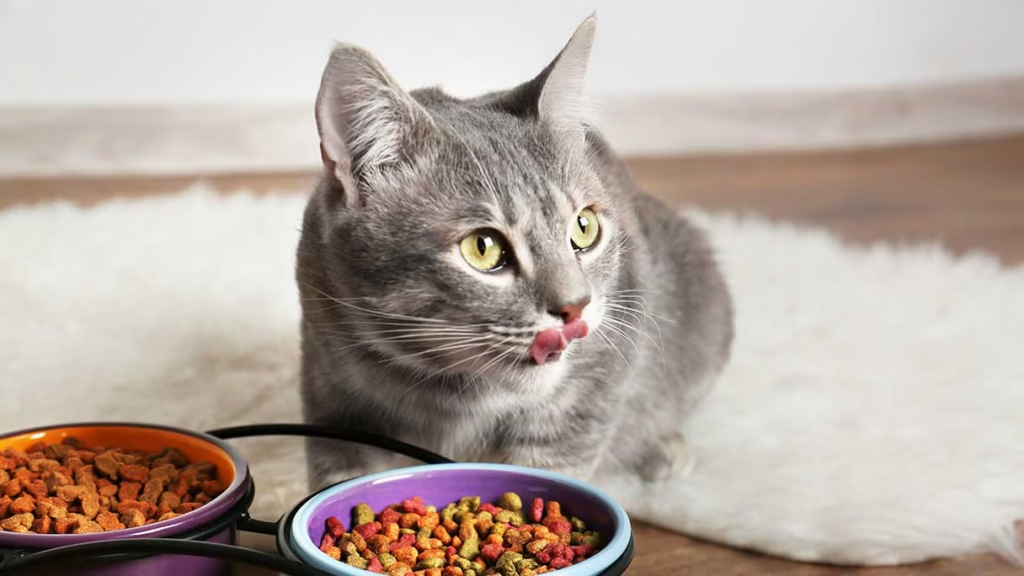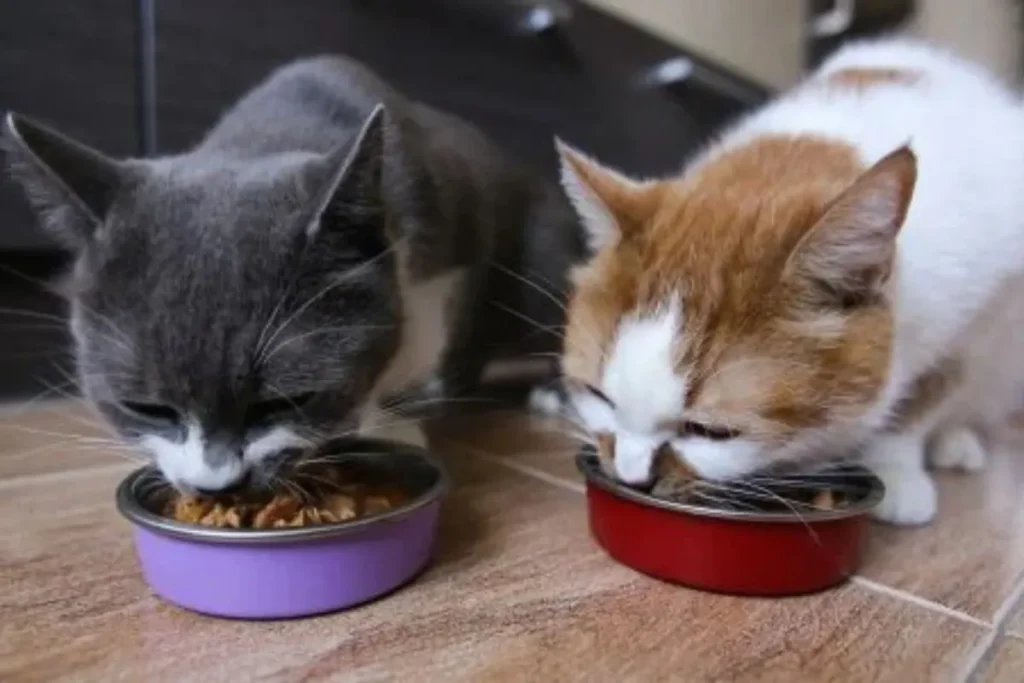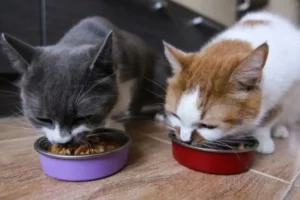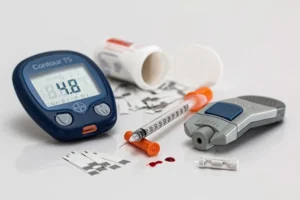Discover the best diabetic cat food to keep your cat healthy and energetic. Explore low-carb, high-protein, grain-free, and wet cat food options, including top U.S. brands, hom
Understanding Diabetic Cats and the Importance of Diabetic Cat Food
If you’ve just learned that your furry friend has diabetes, you might be feeling overwhelmed. Don’t worry—you’re not alone. Many cat owners face the same challenge, and the good news is that diabetic cat food can make a world of difference in managing your cat’s health. Choosing the best diabetic cat food isn’t just about filling the bowl—it’s about giving your cat a diet that helps regulate blood sugar, maintain weight, and keep them happy and active.
First, let’s talk about why low-carb cat food matters. Cats are natural carnivores, so their bodies are designed to process proteins more than carbohydrates. High-carb foods can spike their blood sugar, making diabetes harder to control. That’s why high-protein cat food is essential. It provides the energy your cat needs without causing sugar spikes. Many pet parents find that switching to grain-free diabetic cat food or wet cat food for diabetes helps their cats feel more energetic and less sluggish.
Now, you might be wondering about all the options out there. There are prescription cat food for diabetes brands like Hill’s, Purina Pro Plan Veterinary Diets, and Royal Canin, all formulated specifically for diabetic cats. But some owners prefer homemade cat food for diabetes, which allows you to control exactly what goes into their bowl. Whichever route you choose, it’s vital to ensure the diet is balanced, rich in protein, low in carbs, and tailored to your cat’s specific needs.
Don’t forget the small but mighty additions—diabetic cat treats and supplements can complement their diet without causing spikes in blood sugar. And if your cat is picky, there are options like diabetic cat food for picky eaters or wet cat food options for diabetic cats, ensuring mealtime is something your cat actually enjoys.
Remember, it’s not just about the food; it’s about creating a healthy routine. Feeding at the right time, monitoring portion sizes, and regularly checking your cat’s blood sugar levels all make a huge difference. By understanding your cat’s unique needs and choosing the best diabetic cat food for weight loss or overall health, you’re taking the first big step in helping them live a longer, happier life.
Managing feline diabetes may seem daunting, but with the right diabetic cat food, knowledge, and care, you can help your cat feel better, stay energetic, and enjoy every day by your side.
emade recipe Nutritional Needs of Diabetic Cats and Choosing the Right Food
Feeding a diabetic cat isn’t just about filling the bowl—it’s about giving them a diet that works for their unique needs. Understanding what your cat’s body needs can make all the difference, and that’s where diabetic cat food comes in. Not all cat food is created equal, so knowing what to look for is key to keeping your feline friend healthy and happy.
The most important thing for diabetic cats is high-protein cat food. Protein helps your cat maintain muscle, keeps them energetic, and doesn’t spike blood sugar like carbs do. That’s why low-carb cat food is a must. By avoiding high-carb foods, you help prevent dangerous blood sugar spikes and make insulin management easier. For many cats, grain-free diabetic cat food is a great option because it cuts out unnecessary fillers that can raise blood sugar.
When choosing the best diabetic cat food, you’ll notice two main options: prescription cat food for diabetes and over-the-counter formulas. Prescription options like Hill’s Prescription Diet m/d, Purina Pro Plan Veterinary Diets DM, and Royal Canin Diabetic Feline are specially designed to stabilize blood sugar. On the other hand, high-quality wet cat food for diabetes or dry formulas can work for cats whose diabetes is easier to manage, but always check with your vet first.
For owners who like more control, homemade cat food for diabetes is another option. With guidance from a vet or a feline nutritionist, you can create meals that are high in protein, low in carbs, and perfectly balanced. Adding diabetic cat treats or small snacks won’t hurt, as long as they fit within your cat’s daily carb limits. If your cat is finicky, look for diabetic cat food for picky eaters or wet cat food options for diabetic cats that are tasty and nutritious.
Weight management is another big factor. Overweight cats are more likely to develop diabetes complications, so choosing the best diabetic cat food for weight loss can be a game-changer. Portion control is just as important as the type of food—you can’t just give unlimited servings and expect results. Feeding at consistent times helps keep blood sugar steady, which your cat will thank you for with more energy and better mood.
Finally, always keep an eye on your cat’s response to new foods. Changes in weight, energy, or litter box habits can indicate if the diet is working—or if it’s time to adjust. Remember, feeding your cat the right diabetic cat food isn’t just about nutrition; it’s about creating a routine, supporting their overall health, and helping them live a longer, happier life.
s, and tips for pic: Top Diabetic Cat Food Brands and Homemade Options
Finding the best diabetic cat food can feel like navigating a maze. With so many brands, flavors, and formulas, it’s easy to feel overwhelmed. Don’t worry—we’ve got you covered. Let’s break it down into the top brands available in the U.S., plus some homemade cat food for diabetes ideas that are safe, healthy, and tasty.

Top U.S. Brands for Diabetic Cats
- Hill’s Prescription Diet m/d
- Specially formulated for diabetic cats
- High in protein, low in carbs
- Helps maintain lean muscle and steady blood sugar
- Specially formulated for diabetic cats
- Purina Pro Plan Veterinary Diets DM
- Excellent choice for cats needing consistent blood sugar control
- Available in both dry and wet cat food for diabetes
- Trusted by veterinarians across the U.S.
- Excellent choice for cats needing consistent blood sugar control
- Royal Canin Diabetic Feline
- Carefully balanced nutrients for diabetic cats
- Helps stabilize glucose levels and supports overall health
- Comes in delicious thin slices or pâté forms
- Carefully balanced nutrients for diabetic cats
- Other Popular Options
- Chewy’s diabetic cat food selection
- Petco’s prescription and over-the-counter diabetic diets
- Many offer grain-free diabetic cat food and high-protein cat food for picky eaters
- Chewy’s diabetic cat food selection
Homemade Cat Food for Diabetes
Some cat parents prefer to prepare homemade cat food for diabetes. With careful planning, you can make meals that are safe, nutritious, and tailored to your cat’s taste. Here are some tips:
- Focus on high-protein, low-carb ingredients like cooked chicken, turkey, or fish
- Avoid grains and fillers—stick to vegetables and lean meats
- Always consult your vet before making a diet switch
- Include small portions of diabetic cat treats to reward your cat without spiking blood sugar
Tips for Choosing the Right Food

- Consider your cat’s preferences: Some cats love wet cat food options for diabetic cats, while others prefer dry
- Look at the labels: Make sure the carb content is low and protein content is high
- Watch for special needs: If your cat has kidney, urinary, or weight concerns, choose the best diabetic cat food for weight loss or tailored formulas
Bottom Line
Whether you go for top brands or try homemade cat food for diabetes, the goal is the same: stable blood sugar, healthy weight, and a happy, energetic cat. Feeding your cat the right diabetic cat food, combined with a consistent routine and regular vet check-ups, can make a huge difference in their quality of life.
ky eaters and weight Feeding Schedule, Portion Control, and Managing Special Health Conditions
Feeding your diabetic cat the right diabetic cat food is only half the battle. The other half is how and when you feed them. Establishing a proper feeding schedule and controlling portions can make a huge difference in keeping blood sugar steady and preventing complications.
Feeding Schedule
Cats with diabetes thrive on consistency. Feeding at the same times every day helps their bodies process insulin and food more effectively. For most diabetic cats:
- Offer 2 to 3 small meals per day rather than free-feeding
- Coordinate meal times with insulin injections if prescribed
- Stick to the same diabetic cat food brand and formula to avoid sudden spikes in blood sugar
Portion Control
Even the best diabetic cat food for weight loss won’t work if portions are too large. Too much food can lead to weight gain and blood sugar spikes, while too little can cause hypoglycemia. Here’s what to do:
- Follow the serving guidelines on the food packaging
- Adjust based on your cat’s weight, activity level, and vet’s advice
- Use a digital scale for precision—cats can’t tell us when they’re full!
Managing Special Health Conditions
Diabetic cats often face other health challenges, and their diet needs to account for that. Some considerations include:
- Kidney disease: Choose foods that are high in protein but not overly taxing on the kidneys
- Digestive sensitivities: Look for grain-free diabetic cat food or formulas designed for sensitive stomachs
- Urinary issues: Wet foods can help maintain hydration and support urinary tract health
Tips for Picky Eaters
If your cat turns their nose up at meals, don’t panic. There are plenty of diabetic cat food for picky eaters and wet cat food options for diabetic cats that are both tasty and healthy. Mixing a small amount of wet food with dry kibble, warming the food slightly, or adding safe diabetic cat treats can make mealtime more appealing.
Monitoring and Adjustment
Your cat’s needs may change over time, so keep a close eye on their weight, energy level, and litter box habits. Regular vet visits are essential to:
- Adjust food type or portion sizes
- Evaluate blood sugar control
- Address any new health issues
Bottom Line
Feeding your cat the right diabetic cat food, on a consistent schedule and in controlled portions, is one of the most effective ways to manage diabetes. Combined with regular vet check-ups and attention to special health needs, you’ll help your cat live a longer, healthier, and happier life.
management.Lifestyle Tips, Exercise, and FAQs for Diabetic Cats
Managing diabetes in cats isn’t just about what’s in the bowl—it’s about the whole lifestyle. Along with feeding the right diabetic cat food, keeping your cat active, reducing stress, and understanding common questions can make a huge difference in their health and happiness.
Lifestyle and Exercise Tips
Even a small amount of daily activity can help stabilize blood sugar and prevent weight gain. Here’s how to make exercise part of your cat’s routine:
- Encourage play sessions 10–15 minutes, 2–3 times a day with toys like laser pointers, feather wands, or balls
- Create climbing and scratching areas to keep your cat moving naturally
- Avoid sudden changes in routine; diabetic cats respond best to consistency
Regular activity works hand-in-hand with high-protein cat food and low-carb cat food to help maintain muscle and control weight. For cats struggling with obesity, combining the best diabetic cat food for weight loss with exercise is especially effective.
Reducing Stress
Stress can affect a cat’s blood sugar. Small changes can make a big difference:
- Keep feeding and play times consistent
- Provide quiet spaces where your cat can relax
- Use gentle, reassuring interaction during feeding and grooming
Stress management complements the benefits of grain-free diabetic cat food or wet cat food options for diabetic cats, supporting overall health.
Frequently Asked Questions (FAQ)
1. Can diabetic cats eat treats?
Yes, but choose diabetic cat treats with low carbs and feed them in moderation.
2. How do I transition between foods?
Switch gradually over 7–10 days, mixing increasing amounts of new diabetic cat food with the old.
3. My cat is picky—what can I do?
Try diabetic cat food for picky eaters or wet cat food for diabetes with a variety of flavors to encourage eating.
4. How often should I check blood sugar?
Follow your vet’s instructions. Some cats need checks daily, others a few times a week. Consistency helps monitor the impact of prescription cat food for diabetes or homemade meals.
Bottom Line
Taking care of a diabetic cat goes beyond feeding the best diabetic cat food. A balanced lifestyle with exercise, routine, and stress reduction, combined with regular vet check-ups, ensures your cat stays healthy, happy, and full of energy. By understanding their needs and choosing the right diet, you’re giving your cat the best chance at a long, joyful life.




